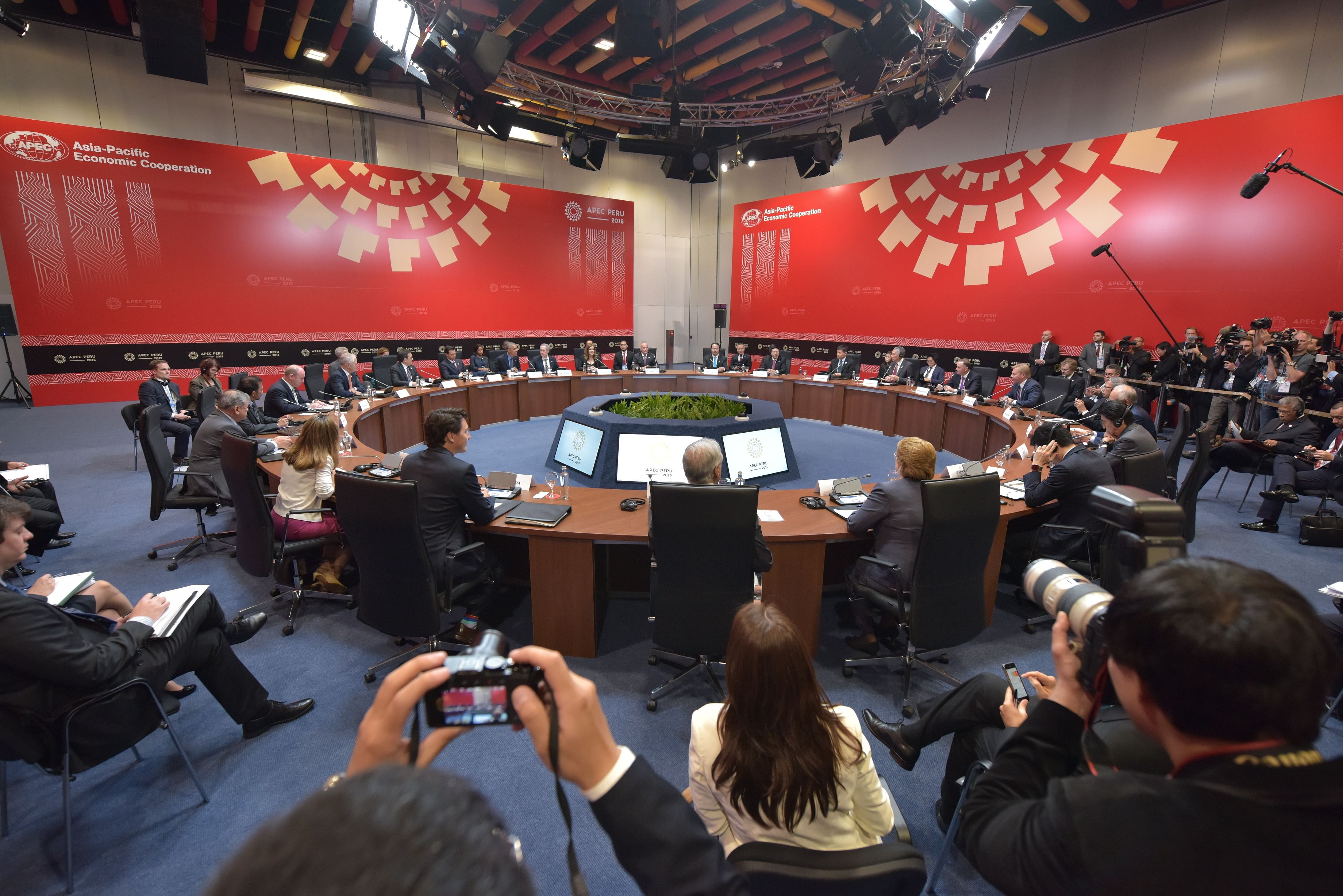Now that President Donald Trump has withdrawn the United States from the Trans-Pacific Partnership (TPP) trade agreement, does it mean the deal is dead? Emphatically not.
One partner has chosen to sit this one out. But Japan, Singapore, Canada, Mexico, Australia, New Zealand and the others are still interested in setting the rules of the game for trade and creating the best environment for promoting growth across the Pacific.
In fact, Mr Trump's "America First" agenda provides renewed incentive for the other 11 TPP members to seek additional opportunities for creating jobs in their own markets. Rising risks of protectionism or even a potential trade "war" looming in the near term makes it all the more important that export and trade-dependent places remain solidly open for business.
The TPP was negotiated with 12 members: Australia, Brunei, Canada, Chile, Japan, Malaysia, Mexico, New Zealand, Peru, Singapore, the US and Vietnam. While the US was the driving force behind the agreement and the largest market, it was certainly not the only player.
The trade agreement continues to provide substantial benefits for businesses even without the US included. This is partly because the American market is already quite open - tariffs are (or have been) quite low for nearly all sectors and services and investment opportu- nities are available for TPP firms, with or without the agreement.
In addition, American negotiators drafted the TPP largely around existing US laws and regulations. This means that the agreement mostly matches American policy with or without the TPP in place in key areas like Customs rules or protection of intellectual property rights or the facilitation of e-commerce. These things will probably not change under Mr Trump.
US withdrawal from the TPP is certainly damaging to American businesses that wanted better access to TPP markets. It is a sign that the US no longer wants to write the rules of the game for trade or be involved in larger, more dynamic and more forward- looking economic arrangements.

But for the other 11 parties in the agreement, implementation of the TPP - with or without the US - is still crucial. The TPP includes not only market-access commitments, but also value-added elements that will make it easier for businesses, especially small and medium-sized enterprises, to participate in and benefit from regional and global value chains. An agreement explicitly designed for a supply- chain world benefits from includ- ing as many participants as possible.
Hence a minor amendment to the agreement is needed to move ahead with the TPP11 now, while keeping an option for a future America to return. The deal should otherwise stay unchanged and exactly as approved by all parties, to speed up implementation.
The benefits for TPP11 members are real, concrete and measurable. The advantages remain, even with the Americans out of the agreement. In fact, a TPP11 might even be better for many firms, since direct US competition could be reduced. It was not simply rhetoric to say that the TPP better matches business patterns in the 21st century than nearly any other trade agreement. A careful look through the texts, country-specific commitments and schedules shows clearly that TPP member firms will receive significant boosts across most sectors.
For example, most tariffs will fall and the majority will drop to zero from the first day of the agreement. Most services and investment sectors are to be fully opened to TPP companies. Locking in these kinds of commitment is important, especially when global trade is at risk in 2017 and beyond.
The TPP can be a challenging agreement for companies to understand. The interlocking nature of commitments means that firms - large and small - receive benefits scattered in chapters all across the deal.
But when untangled, the TPP actually offers firms refreshing certainty and clarity. When some countries are drawing up the gates and threatening to unleash all manner of trade-distorting tools, implementation of the TPP significantly reduces risk and costs in key member states.
In fact, precisely in a world of growing trade uncertainty and economic slowdown, the implementation of the TPP offers an opportunity to show how open markets matter in countries that remain committed to the idea. The TPP11 illustrates the importance of building institutions as a bulwark against a retreat from globalisation.
The fact that one member has opted to leave should not be viewed as a signal that the remaining TPP parties will also make the same mistake. We therefore call on the other 11 TPP member countries to implement the TPP as it will significantly benefit our companies.
•Ho Meng Kit is CEO of Singapore Business Federation and Deborah Elms is Executive Director, Asian Trade Centre in Singapore.
